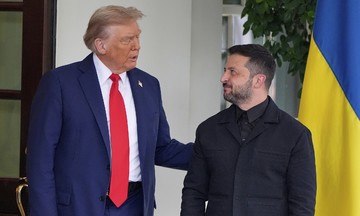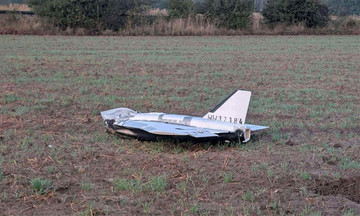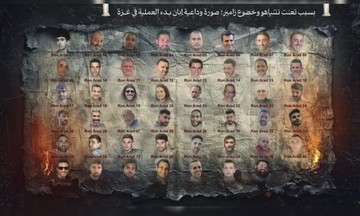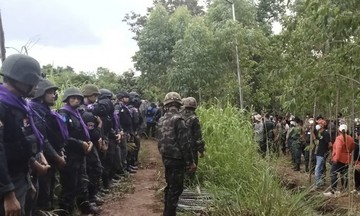When Russian tanks crossed the border into Ukraine in 2/2022, many believed Kyiv would fall quickly. Prior to the conflict, Ukraine had been modernizing its military to NATO standards, but the war disrupted these efforts. As a result, Ukraine's forces were initially perceived as weaker than Russia's.
Russia reportedly planned to capture Kyiv within three days, and Western nations feared President Volodymyr Zelensky's government wouldn't last a week. US officials even prepared a helicopter evacuation for Zelensky, which he refused, determined to stay in the capital.
For over three years, Ukraine has fought with NATO's military support, including weapons and training. Many Ukrainian soldiers have trained in NATO countries, learning to operate Western aircraft like the F-16 fighter jet.
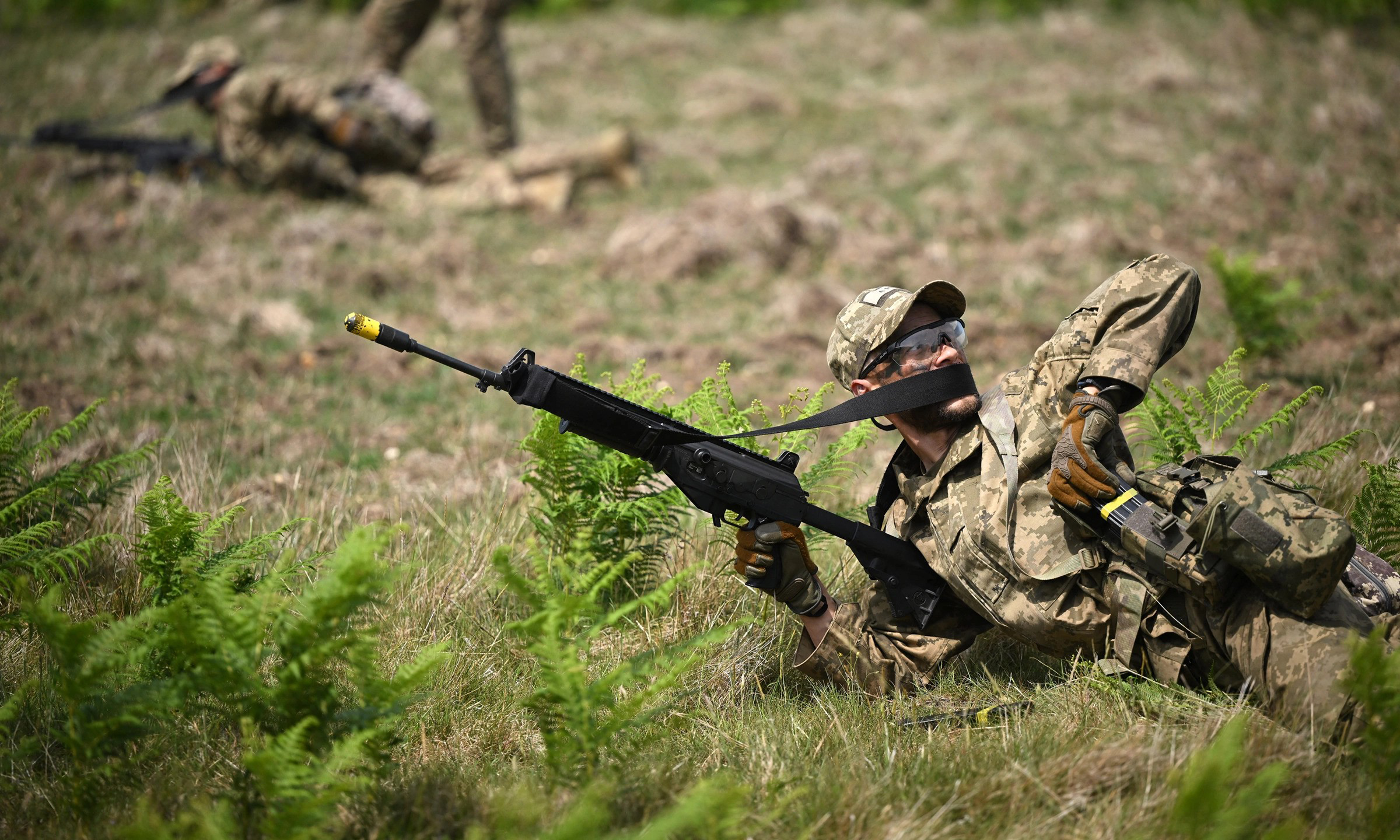 |
Ukrainian soldiers during a training exercise in eastern England in June. Photo: AFP |
Ukrainian soldiers during a training exercise in eastern England in June. Photo: AFP
NATO leaders have long acknowledged the West can learn from Ukraine's combat methods and force organization. The alliance established a joint facility in Poland to gather and analyze lessons from the conflict.
A memorandum signed on 18/9 by the Polish and Ukrainian defense ministers marks a milestone, signifying NATO's recognition of Ukraine's drone expertise, according to Business Insider commentator Matthew Loh.
Under the agreement, Ukraine will train Polish soldiers in drone warfare, now central to the conflict between Kyiv and Moscow, to help Warsaw protect its airspace. The agreement also includes provisions for increased cooperation in drone and robot production.
"Among Western-influenced countries on our side, Ukraine has the most experience in producing and using this equipment," said Polish Defense Minister Władysław Kosiniak-Kamysz, referring to drones and counter-drone capabilities.
The agreement was signed about a week after Poland alleged at least 19 Russian unmanned aerial vehicles (UAVs) entered its airspace.
This incident occurred during Russia's combined assault on western Ukraine. The Russian Defense Ministry claimed it "did not target anything in Poland" and was open to consultations with Warsaw.
After Poland's alert, NATO deployed F-35, F-16, and other fighter jets. Along with Polish air defenses, they shot down at least 4 UAVs; the rest apparently crashed after running out of fuel.
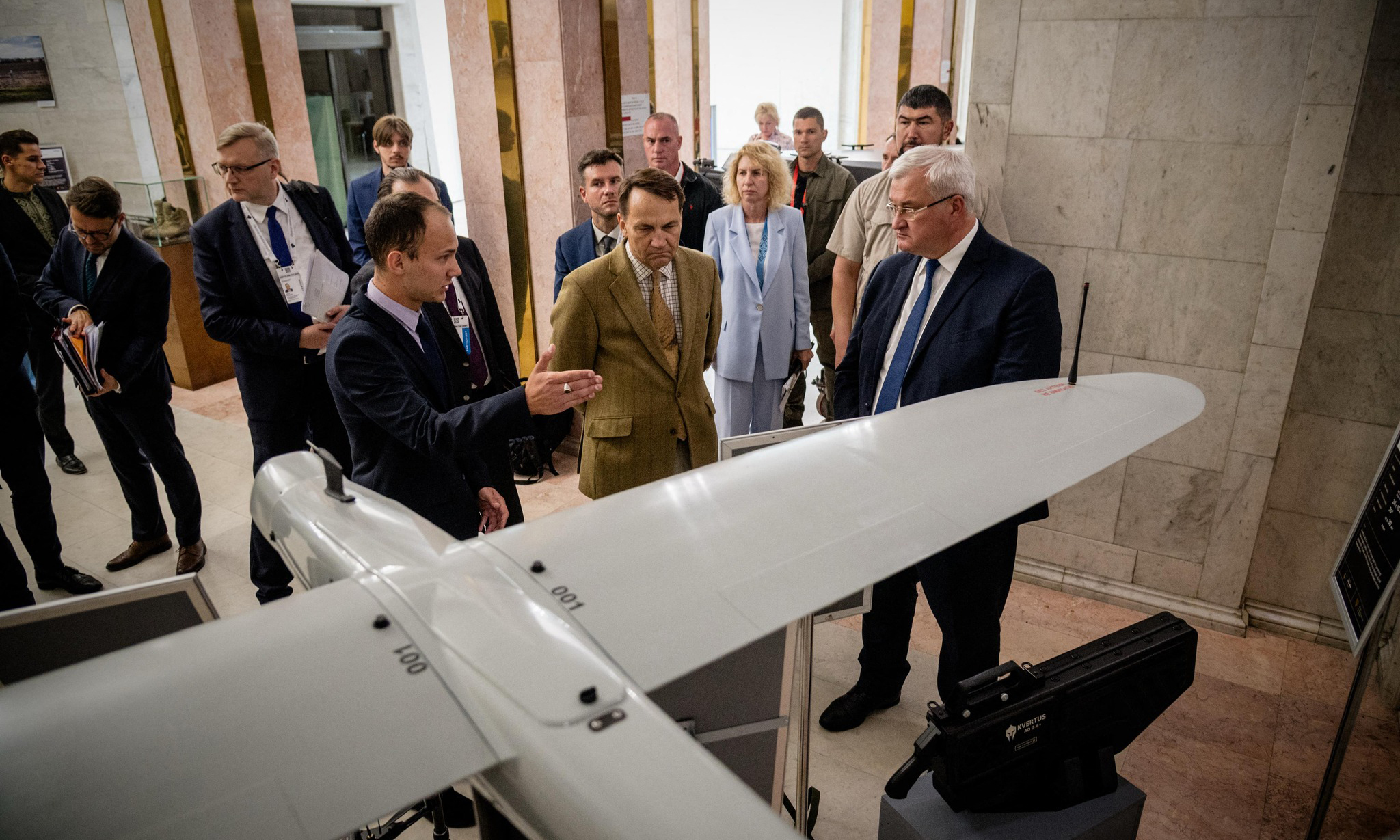 |
Polish Foreign Minister Radoslaw Sikorski (center) visits a drone exhibition in Kyiv, Ukraine, on 12/9. Photo: AFP |
Polish Foreign Minister Radoslaw Sikorski (center) visits a drone exhibition in Kyiv, Ukraine, on 12/9. Photo: AFP
NATO's UAV response has been less effective than Ukraine's, which claims an 80-90% interception rate against Russian UAVs, despite facing larger numbers.
Local media reports suggest NATO's F-35s likely fired AIM-120C-7 medium-range and AIM-9X short-range air-to-air missiles, costing over 2 million USD and around 500,000 USD each, respectively, to down inexpensive UAVs.
The UAVs that entered Polish airspace were identified as Gerbera decoys, made of cheap materials like wood and plastic foam, costing no more than 10,000 USD to produce.
"Are we going to scramble F-16s and F-35s every time? That's not sustainable. We need to bolster counter-UAV systems," said Ulrike Franke, senior policy fellow at the European Council on Foreign Relations (ECFR).
Meanwhile, Ukraine has developed more cost-effective countermeasures. Russia often launches these UAVs alongside ballistic and cruise missiles to overwhelm air defenses. Ukraine reserves its expensive anti-aircraft missiles for Russian ballistic and cruise missiles, while lower-tier threats like suicide and decoy UAVs are countered by cheaper methods like electronic warfare and interceptor drones.
Fast interceptor drones are emerging as a key solution with significant potential for Ukraine to counter Russian air attacks.
Another long-standing Ukrainian tactic involves mobile air defense teams with truck-mounted rifles and machine guns. However, Russian UAVs sometimes fly beyond their range.
Mobile Ukrainian air defense teams counter Russian UAVs in a video posted in August. Video: Telegraph
Another option is using helicopters or propeller-driven aircraft to pursue and shoot down Russian UAVs with small arms.
"Only multi-layered air defense can counter large-scale UAV attacks," President Zelensky said on 11/9.
He stated that NATO using expensive air defense weapons against cheap UAVs isn't effective, adding that Kyiv can advise the alliance on better countermeasures. "Ukraine is ready to share its experience and expand production," Zelensky said.
The memorandum between Poland and Ukraine suggests NATO is finally ready to accept Kyiv's offer and learn from Ukraine's battlefield experience, according to Loh.
Pham Giang (Business Insider)





